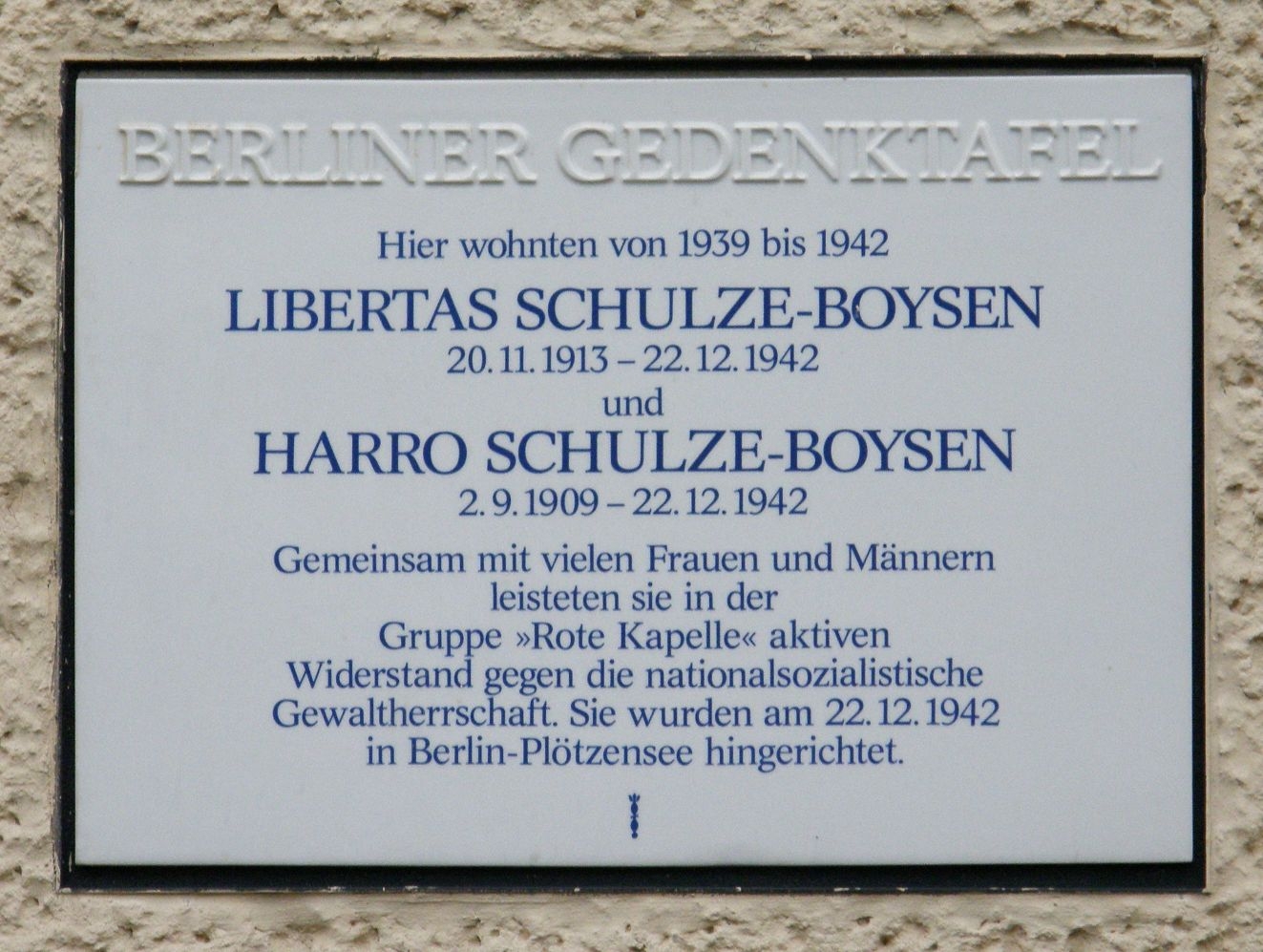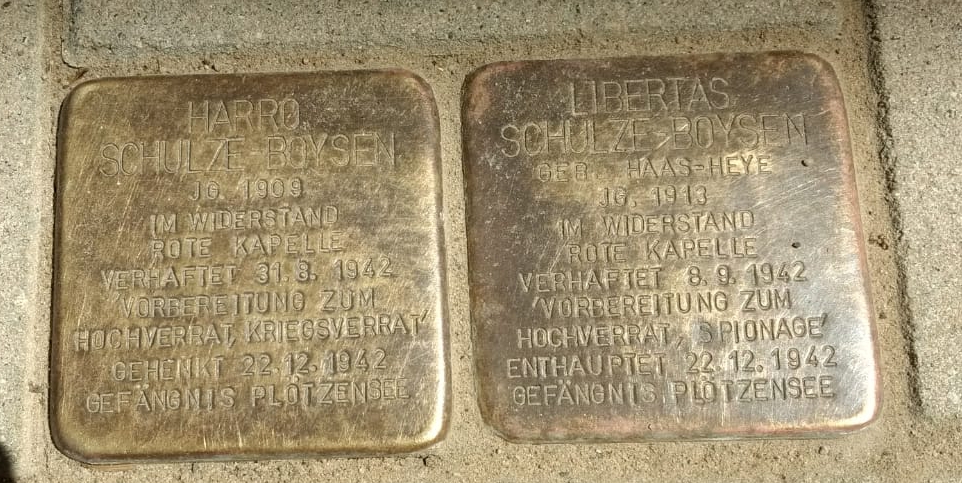Schulze-Boysen, Libertas, 1913-1942
Enlarge text Shrink text- "Erzähl allen, allen von mir!" c2008:t.p. (Libertas Schulze-Boysen) p. 49, etc. (b. Nov. 20, 1913 in Paris; executed Dec. 22, 1942 in Plötzensee, Germany)
- The Bohemians, 2020:CIP galley (30 January, 1933, the 19-year-old Libertas Haas-Heye; lived in a Berlin boarding school, then in Paris, London, and Switzerland; July 26, 1936 marries Harro Schulze; use double name Schulze-Boysen)
- The girl on the platform, 2021
Libertas "Libs" Schulze-Boysen, born Libertas Viktoria Haas-Heye (20 November 1913, Paris – 22 December 1942, Plötzensee Prison) was a German Prussian noblewoman, who became a resistance fighter against the Nazis. From the early 1930s to 1940, Schulze-Boysen attempted to build a literary career, first as a press officer and later as a writer and journalist. Initially sympathetic to the Nazis, she changed her mind after meeting and marrying Luftwaffe officer Harro Schulze-Boysen. As an aristocrat, Schulze-Boysen had contact with many different people in different strata of German society. Starting in 1935, she utilized her position to recruit left-leaning Germans into discussion groups which she hosted at her and Harro's apartment, where they sought to influence their guests. Through these discussions, resistance to the Nazi regime grew, and by 1936, she and Harro began to actively resist the Nazis. During the early 1940s, whilst working as a censor for the German Documentary Film Institute, Schulze-Boysen began to document atrocities committed by the Nazis from photographs of war crimes forwarded by soldiers of the Sonderbehandlungen task force to the Film Institute. By 1940, the couple came into contact with other Berlin-based anti-fascist resistance groups and collaborated with them. The most important of these was run by Arvid Harnack. From April 1941, their underground resistance group became an espionage network that supplied military and economic intelligence to the Soviet Union. That organisation became known as the Red Orchestra ("Rote Kapelle") by the Abwehr. Schulze-Boysen was fully aware of her husband's espionage activities and became one of his most active agents, working as a courier, a writer of seditious pamphlets and a recruiter for the group. When Harro was not present she deputised as the groups leader. When her husband was arrested in August 1942 by the Gestapo, she made a valiant attempt to destroy evidence of their work and warn other members of the group, but it was to no avail. Schulze-Boysen was arrested in September 1942, a month after her husband Harro, and both were executed on the same day in Plötzensee Prison.
Read more on Wikipedia >
 Personality
Personality


.jpg)






